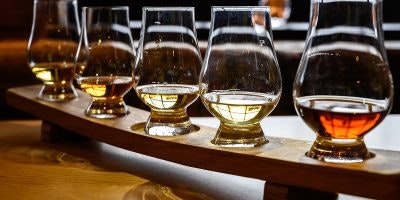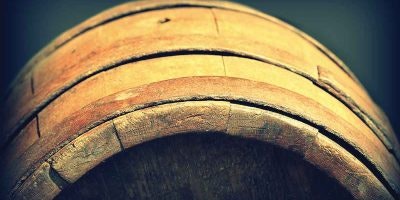In courtrooms and government offices around the world, a battle between two of the spirit industry’s largest corporations has quietly been going on for over 20 years. This conflict is the story of two rum families, of gains and losses, a historic trademark, and the legacy of Cuban rum in the modern age.
The story begins over a century ago. In 1878, the Arechabala family began creating rum in Cuba (their first line was called Ron Bucanero). They competed with the Bacardi family for their share of the marketplace. From the time of Prohibition (1920-1933), tourists from the United States had been allured by Cuban rums in their visits to the island. This led to the creation of some of the most famous classic cocktails such as the Cuba Libre and Daiquiri. In 1934, the Arechabala family rebranded and introduced Havana Club rum with a post-Prohibition U.S. market in mind. The Bacardi and Havana Club brands expanded their rivalry into the U.S., becoming two of the best known rums in the world.
REVOLUTION AND EXILE
In the early 1950’s, political unrest and revolution had taken hold in Cuba. As a result, the Bacardi and Arechabala family rivalry extended into the political arena. The Bacardi family was sympathetic to Fidel Castro and his revolution. The Arechabalas, however, supported the regime of Cuban dictator Fulgencio Batista. On New Year’s Day 1960, everything changed. Castro’s forces, now in power, arrived at the Arechabala business offices and seized control of their Havana Club rum operations. The family fled, disenfranchised, with their trademark and recipes for their rums among their few possessions.
Nine months later, the Bacardi family’s operations met a similar fate. However, due to concerns with President Batista’s policies, they had already spread their operations abroad to Bermuda, the Bahamas, Mexico, and Puerto Rico. The Cuban Government converted the 12-story Bacardi Headquarters in Havana into an office building dedicated primarily to Cuba’s tourist trade. The Bacardi Distillery in Santiago de Cuba was used to produce rum for the local market until it was converted into a museum and tourist attraction. Over time, all of the islands rum factories were seized and Cuban rum production was completely controlled by the government. It was supervised by the Corporacíon Cuba Ron which traded under the name Cubaexport. As rum production once again resumed, Havana Club became the dominant brand on the island. Eventually Cubaexport would facilitate distribution of Havana Club to Europe and Russia.
TRADEMARK EXPIRES
The Bacardi family, now living in exile, continued to produce the majority of their rum in Puerto Rico. In 1973 the Arechabala family, now settled in the United States, having left rum production behind, decided to let their Havana Club trademark license expire. Cubaexport registered the trademark with the U.S. government in 1976. However, due to the trade embargo, they could not make any inroads into the U.S. As both Bacardi and Havana Club grew in their respective markets around the world, the rivalry seemed isolated to the store shelves and bars. Then, in 1993 a new stage of the rum war began.
ENTER PERNOD RICARD
In 1993, Cubaexport began looking for a foreign partner to help expand their global distribution network. To help achieve that goal, they formed Havana Rum and Liquors S.A. (HRL). The search brought them together with Pernod-Ricard. That November the two companies announced the creation of Havana Club Holdings, S.A (HCH). Together the two companies grew the Havana Club brand into the third best-selling rum in the world.
BACARDI BUYS RECIPE FROM FORMER RIVALS
During the next year the Bacardi family negotiated with the Arechabala family, their former rivals, and purchased any remaining rights they might have had to the Havana Club name along with the recipe for the product. In 1996 the Bacardi Corporation released a white rum version of Havana Club in the U.S. using the Arechabala recipe. This resulted in HCH filing a trademark lawsuit against Bacardi citing violations of the Lanham Act (a federal statute that governs trademarks and service marks). The culmination of these actions formed the foundation of what is now the Bacardi v. Havana Club trademark dispute.
BACARDI V. PERNOD RICARD
Bacardi representatives on one side claim that Pernod-Ricard and the Cuban Government have no rights to the trademark because Havana Club was illegally seized. Bacardi had purchased the rights to use the trademark and sell “Havana Club” in the U.S. market. Pernod-Ricard, in opposition, claims that the trademark was not stolen because the Arechabala family did not renew it. Furthermore, Havana Club rums have been sold around the world, proving active use in the world market. With litigation and rulings shifting back and forth in favor of or against both companies, the legal battles seemed to reach a stalemate.
Then, in June of 2002, the matter was brought before the World Trade Organization (WTO). The European Union (EU) filed a complaint against the United States alleging that a law which prohibited the registration and enforcement in the U.S. of a Cuban trademark (Havana Club) was a violation of the WTO Agreement.
In 2006, the U.S. Department of Treasury, under the guidance of the U.S. State Department, did not allow Pernod-Ricard to renew the Havana Club trademark. Appeals and lawsuits were immediately filed to reverse this decision which culminated in the Supreme Court refusing to review the case in 2012.
SO WHERE ARE WE NOW?
The matter appeared to be settled until January of 2016 when again under the guidance of the State Department, the U.S. Department of Treasury allowed HRL the right to renew the trademark through 2026. HRL immediately took action, and Bacardi filed its own complaints and appeals concerning this legal reversal.
FIRST TO THE MARKET WINS?
In 2016 the Bacardi corporation expanded their Havana Club rum line with an updated silver (Añejo Blanco) and a new gold rum (Añejo Clásico) along with a new bottle design and label. In June 2016, they released it in Florida and other markets with a wider release expected later this month. Meanwhile, HRL filed a new trademark called “Havanista”. It will be used in the U.S. in place of Havana Club, in case litigation goes against them by the time the embargo is lifted. Both companies are hoping for this dispute and latest round of litigation to be settled within the next year.
There is optimism as relations between Cuba and the United States continue to improve. As more litigation is reviewed, the U.S. market will once again see Cuban rums on store shelves. In the meantime, the industry watches and waits to see if this historical battle of spirit titans will ever be resolved.
Ready to start hunting for rum?
With Distiller, you’ll always know what’s in the bottle before you spend a cent. Rate, Review, and Discover spirits! Head on over to Distiller, or download the app for iOS and Android today!



